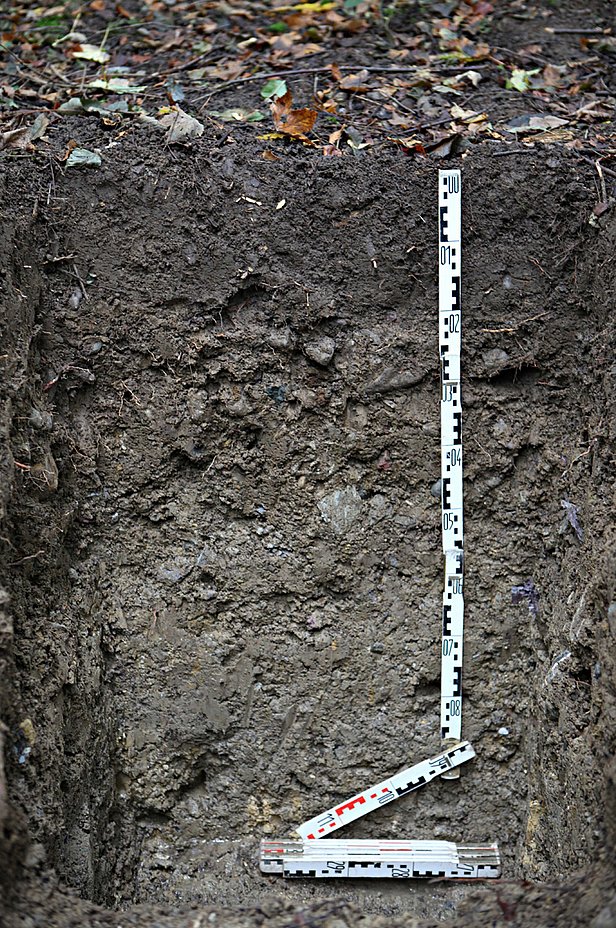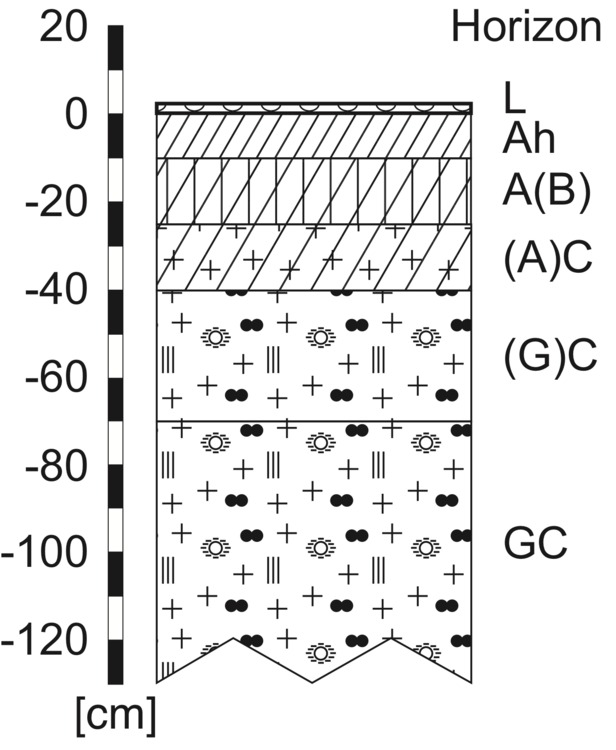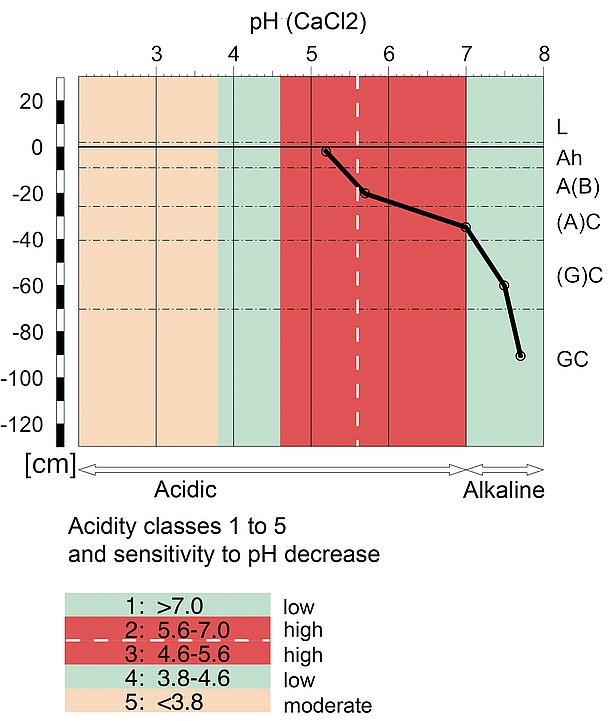We excavate soil pits to capture the morphological, chemical and physical properties of the solid soil components. This allows us to assess how well a soil can fulfil its functions, for example as a nutrient supplier for plants or as a filter of pollutants. In forestry practice, soil properties play a role in the selection of site-appropriate tree species for forest regeneration.
Important morphological soil properties include the colour and texture of the solid soil substance or redoximorphic features resulting from periodic waterlogging.
We determine the chemical and physical properties of soil samples in the laboratory such as soil acidity and nutrient content, soil density and water retention capacity. Each soil can be assigned to a humus form and a soil type.
The soil profile on the LWF demonstration site
The soil profile on the LWF demonstration site (fig. 1) can be divided into five mineral soil horizons (fig. 2).
The topsoil is acidified (fig. 3) and from a depth of 25 cm the fine earth contains carbonate with a respective high pH value above 7.
The humus form is a biologically active mull, the soil type a slightly brown Pararendzina. The lower part of the soil profile is periodically saturated by groundwater, which limits the oxygen supply to the plant roots. Overall, the water and nutrient storage capacity of the soil is considered good.


